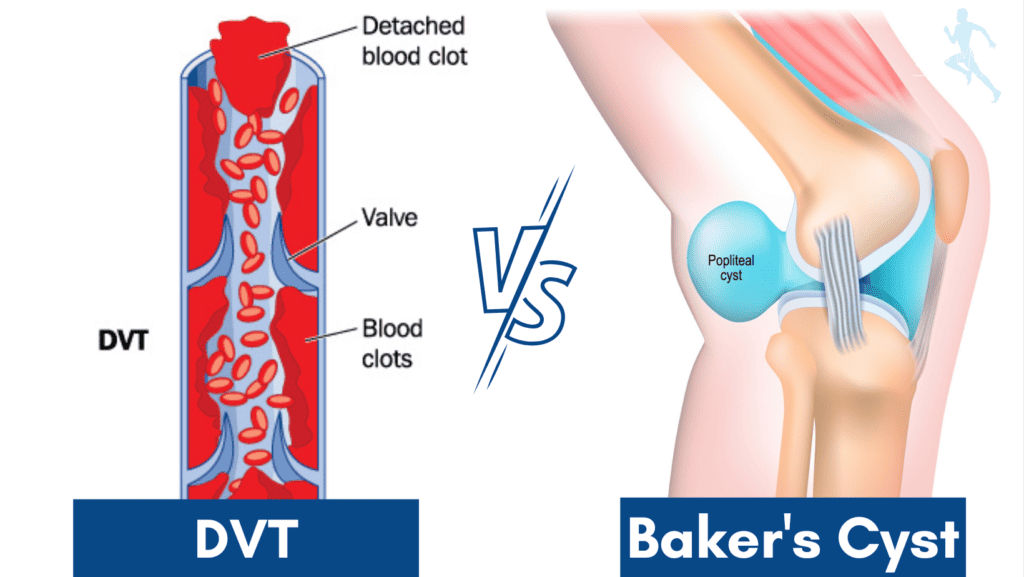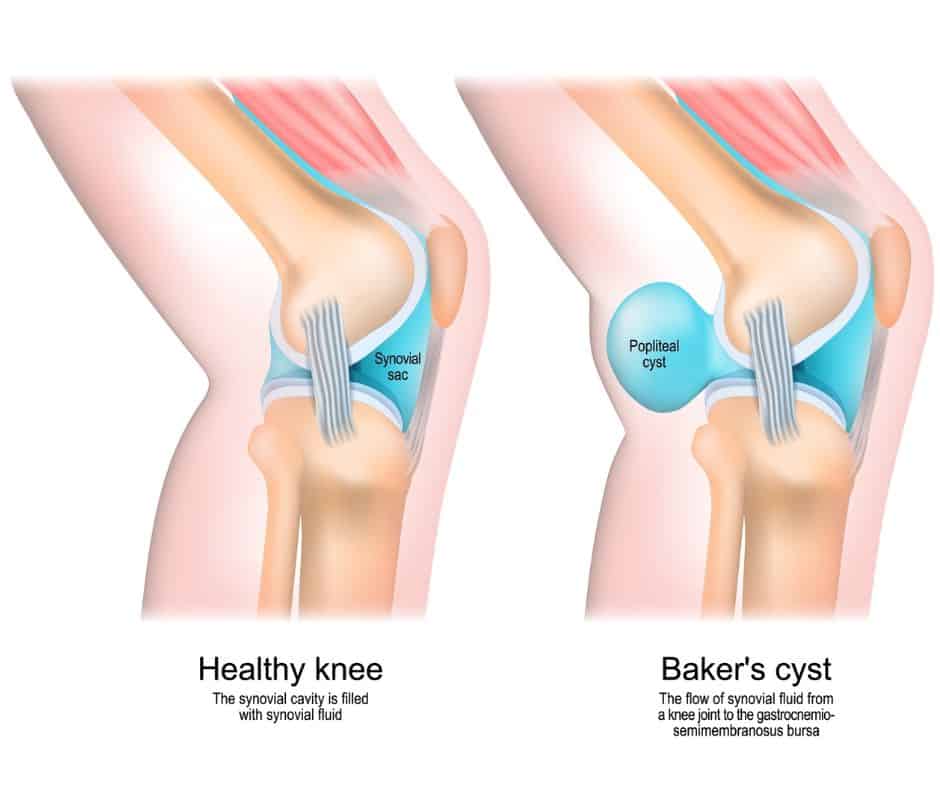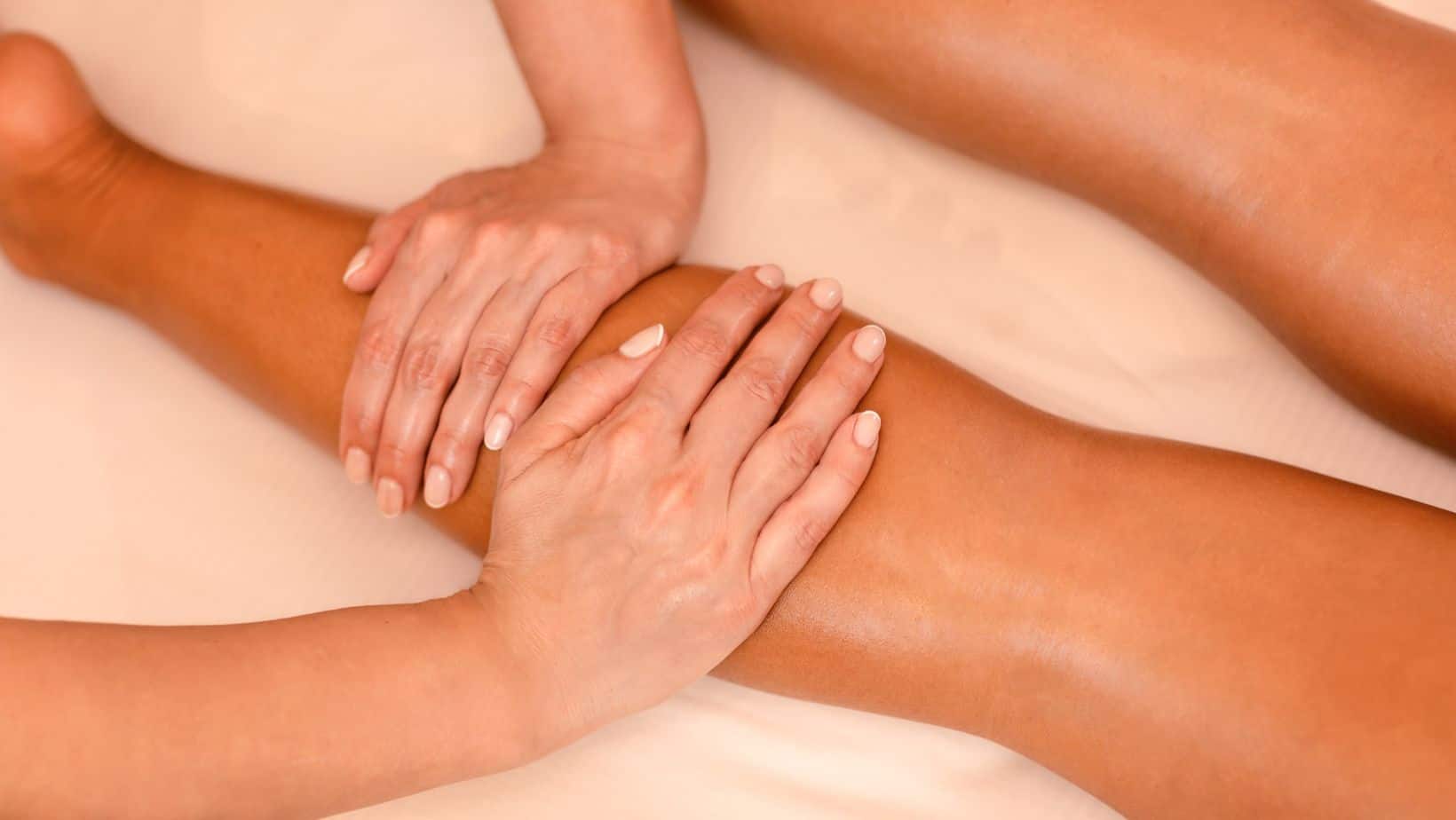Baker’s Cyst: Symptoms, Causes and Diagnosis
Read More >
A Baker’s cyst is a painful condition of swelling at the back of the knee. It occurs when there is damage to the knee and the connective tissue that encloses the joint, the synovium, stretches and forms a cyst at the back of the knee. You will be able to see a prominence at the back of the knee, of which the size can vary, average size is about 3 cm. If the knee is irritated, the cyst can become further enlarged. When the knee is flexed, the cyst is compressed and this is usually painful and the range of movement may be limited.
Treatment for a Baker’s cyst is predominantly rest and elevation to encourage the cyst to drain and reduce in size. Which will reduce pain and improve the available range of movement at the knee. You can read more about treatments in our related article: How to treat Baker’s Cyst Behind the Knee.
A condition with similar signs and symptoms to a Baker’s Cyst is a deep vein thrombosis, also known as a DVT. A DVT is a blood clot in the calf or back of the knee. This is a serious condition that must be diagnosed and effectively treated promptly, as the clot can dislodge and move to the lungs, where it can restrict blood flow to the surface of the lungs. This is termed a pulmonary embolism and is a life-threatening condition.
A DVT or suspected DVT is a complete contraindication to massage treatments and needs urgent medical attention. Diagnosis should be confirmed with ultrasound, Doppler ultrasound or MRI before any massage treatment to the leg.


A Baker’s cyst is swelling not within muscle but within an enlarged synovial membrane at the back of the knee in the popliteal fossa. The popliteal fossa is an area through which large blood vessels and nerves pass en route to the lower leg and is contraindicated to massage for this reason.
Massage and pressure on a Baker’s cyst will be painful and unlikely to help the condition. In most cases, it will make the Baker’s cyst more painful and, if further irritated, may make the cyst swell more.
Massage to the surrounding tissues, such as the quadriceps, hamstrings and calf muscle, is safe, provided the back of the knee is avoided.
Ice is an effective form of pain relief, and is safe to use on a Baker’s cyst if applied gently. It can be incorporated with a compression bandage or sleeve to the back of the knee. Always have a layer of cloth between ice and skin, as you can get an ice burn.
A Baker’s cyst can rupture, which causes the fluid from within the cyst to move into the surrounding tissues. Typically, it will go into the calf area and form significant swelling in the lower leg. A diagnostic point to look out for is a crescent sign. A Crescent sign is a crescent moon-shaped darkening or bruise on the inside of the ankle below the medial malleolus.
If the diagnosis is confirmed with diagnostic imaging, and if a DVT is completely ruled out, then gentle massage or lymphatic drainage massage can be helpful to aid recovery and drainage of the fluid from around the calf. This should be done as long as the pain is low for the patient throughout and after the treatment. Before commencing massage for a ruptured Baker’s Cyst, we recommend consulting a medical professional.

This is not medical advice. We recommend a consultation with a medical professional such as James McCormack. He offers Online Physiotherapy Appointments weekly.